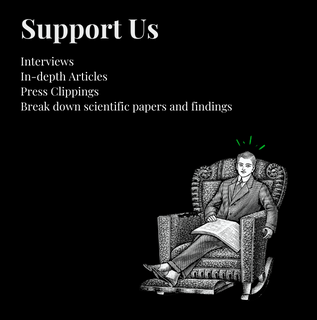A study conducted by the CoEHAR team has shed light on the utility and safety of varenicline in supporting so-called dual users, those who consume both conventional cigarettes and electronic ones. The confirmation of varenicline’s effectiveness in this specific population represents a significant advance in knowledge and therapeutic options available for smoking cessation.
In a recent article published on November 21, 2023, in EClinicalMedicine, part of The Lancet Discovery Science, an international team of researchers led by the CoEHAR Institute has marked a milestone in smoking cessation.
The study titled “Varenicline for smoking cessation in individuals who smoke cigarettes and use electronic cigarettes: a phase 3 double-blind, randomized, placebo-controlled trial” addresses a particularly complex challenge in public health: the dual dependence or addiction in dual users, who, despite using electronic cigarettes, cannot completely quit combustible cigarette consumption.
A phase 3 double-blind, randomized, placebo-controlled trial is an advanced clinical study used to evaluate the effectiveness and safety of a new treatment or medication. In this phase, many participants are randomly divided into two groups: one receives the actual treatment and the other a placebo, a substance without therapeutic effect.
Neither the participants nor the researchers know who receives the treatment and who the placebo is (hence the term “double-blind”) to ensure that the results are not biased by patients’ and doctors’ expectations or behaviors. Comparing results between both groups allows for determining if the treatment is effective and safe, eliminating the influence of psychological factors or others that could alter the results.
In this sense, this study not only sheds light on a group often marginalized in smoking research but also opens a promising path for more effective treatments tailored to specific needs. The inclusion of varenicline in this context represents a significant advance, offering a possible solution for those struggling to free themselves from dependence on two different forms of nicotine consumption.
With its rigorous approach and hopeful results, the research positions itself as an important benchmark in the search for more effective and humane strategies to combat smoking in all its forms. From this study, varenicline is presented as a drug that can be seen as a bridge to freedom for dual users. Before this study, the effects of varenicline on dual users were largely unknown, leaving a critical gap in smoking cessation research. This trial set out to fill that gap, examining the effectiveness and safety of varenicline in helping dual users in their attempts to quit smoking.
Key Findings
The findings of the study are promising. They revealed that varenicline significantly helps dual users achieve sustained tobacco abstinence. This is particularly notable since the presence of depressive symptoms and gender-related factors are known as strong predictors of outcomes in smoking cessation. The study showed that, similar to smokers of a single medium, these factors also affected success rates among dual users.
Professor Pasquale Caponnetto, one of the study’s lead authors, highlights the persistence of dual use, with nearly half of the individuals continuing the habit for a year. He emphasizes the role of varenicline, along with counseling, in facilitating prolonged abstinence without significant adverse events.
“Almost half of the individuals who smoke and use electronic cigarettes simultaneously continue this habit for a year, with 44% eventually returning to exclusive cigarette consumption,” Caponnetto pointed out. “Data from our study indicate that varenicline, along with counseling, can facilitate prolonged abstinence without significant adverse events, an additional option for those seeking to quit smoking.”
Meanwhile, Professor Jasjit Ahluwalia from Brown University notes the remarkable efficacy of varenicline in this demographic, surpassing previous results seen in general smoking cessation trials: “It is remarkable that the level of efficacy in the varenicline group of established dual users has exceeded those reported in randomized controlled trials (RCTs) for smoking cessation in smokers from the general population.
It is believed that this divergence stems from participants’ higher levels of motivation and a compensatory/substitution phenomenon documented attributed to increased use of electronic cigarettes (EC) within the varenicline group.
Methodology and Results: Towards a Wider Application
Between November 2018 and February 2020, 114 participants successfully completed the intervention phase of this significant study. During this period, the group that received varenicline demonstrated notably higher smoking cessation rates, a finding that highlights the drug’s effectiveness in treating dual users. This result is particularly relevant, given that smoking cessation represents a considerable challenge for this population.
Regarding the safety of the treatment, the adverse events recorded during the study were mostly mild or moderate in nature. These adverse incidents occurred infrequently and rarely resulted in the need to discontinue treatment. This aspect is crucial, as it indicates a favorable safety profile for varenicline in the context of dual users.
The low incidence of serious side effects suggests that varenicline is not only effective but also well tolerated by people seeking to quit smoking, representing encouraging news for those committed to the difficult task of overcoming tobacco dependence.
The study proposes an innovative cessation strategy: the inclusion of varenicline in programs aimed at adults who simultaneously smoke traditional cigarettes and use electronic cigarettes. This suggestion opens a promising path towards smoking abstinence, particularly interesting due to the absence of serious adverse events associated with the use of varenicline. This approach stands out in a field where no conclusive evidence exists on effective cessation methods specifically adapted for dual users.
The relevance of this recommendation lies in its potential to fill a gap in research and treatment of smoking. Given the scarcity of proven and effective alternatives for this unique group, varenicline emerges not only as a viable option but also as a tangible hope for those struggling with dual nicotine dependence. This study, therefore, not only contributes to existing scientific knowledge but also offers a pragmatic, patient-centered direction to address the multifaceted challenge of smoking in a specific and often neglected population.
Professor Riccardo Polosa, founder of CoEHAR, emphasizes the novelty of this study, which represents the first scientific exploration of a combined approach aligning tobacco harm reduction with existing cessation guidelines, particularly for dual users.
“This study marks the first global scientific exploration into a combined approach involving electronic cigarettes, smoking cessation medications, and cognitive-behavioral therapy to achieve cessation goals. It demonstrates the potential of expanding tobacco harm reduction to align with existing cessation guidelines, particularly for specific groups like dual users, a previously unexplored area. The integration of vaping into cessation guidelines is essential.”
The Open Path for Future Research
This study transcends being simply a guide for those dual users determined to overcome their addiction, transforming into a source of inspiration and an open invitation to the scientific community to delve deeper into research. Not only does it open innovative paths in smoking treatment, but it also highlights the critical importance of undertaking broader and more representative studies. The need for research that encompasses a wider diversity of populations and contexts is fundamental to validate and enrich the presented findings.
The promise that varenicline represents in the field of integrated smoking cessation strategies, especially for dual users, is notable. Its potential integration into public health policies and programs could represent a significant advancement in how we approach the fight against tobacco addiction. This advancement not only offers new avenues of hope for those struggling with addiction but also marks a progressive, evidence-based direction in our ongoing battle against the harms of smoking.





